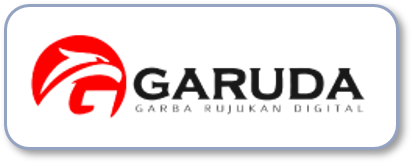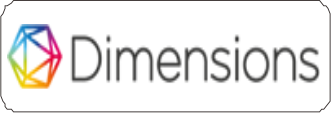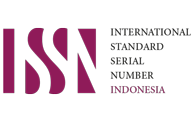Analysis of the Use of Instagram as a Platform in Learning English-Speaking Skill
Keywords:
English Language Learning, Student's Issues, Instagram MediaAbstract
Technology is integral to schooling in the 4.0 industrial revolution. Technology impacts education, including pupils. Technology affects their sight, hearing, speech, and communication. This research seeks to understand Instagram use in English Bilingual Program. This research uses open interviews so respondents can clearly and thoroughly answer portion-specific questions. Students profit much from learning speaking on Instagram, according to the study. Most said (1) students trust themselves in speaking English, (2) they focus more on perfect grammar while speaking, (3) they can easily fix their friends' posts, and (4) unfavorable comments from friends push them to speak more clearly and fluently.
References
Arman, A. A., & Sidik, A. P. (2019). Measurement of Engagement Rate in Instagram (Case Study: Instagram Indonesian Government Ministry and Institutions). 2019 International Conference on ICT for Smart Society (ICISS), 7, 1–6.
Babtain, A. (2021). The Effect of McGraw-Hill Education Connect on Students’ Academic Performance. International Journal of Emerging Technologies in Learning (IJET), 16(3), 86–113.
Binti Azlan, N. A., Zakaria, S., & Yunus, M. (2019). Integrative Task-Based Learning: Developing Speaking Skill and Increase Motivation via Instagram. International Journal of Academic Research in Business and Social Sciences, 9. https://doi.org/10.6007/IJARBSS/v9-i1/5463
Çakmak, F. (2020). Social Networking and Language Learning: Use of Instagram (IG) for Evaluating Oral Communication Skill. In Recent Tools for Computer- and Mobile-Assisted Foreign Language Learning (pp. 110–131). IGI Global. https://doi.org/10.4018/978-1-7998-1097-1.ch005
Carpenter, J. P., Morrison, S. A., Craft, M., & Lee, M. (2020). How and why are educators using Instagram? Teaching and Teacher Education, 96, 103149. https://doi.org/10.1016/j.tate.2020.103149
Cheng, W. W. H., Lam, E. T. H., & Chiu, D. K. W. (2020). Social media as a platform in academic library marketing: A comparative study. The Journal of Academic Librarianship, 46(5), 102188. https://doi.org/10.1016/j.acalib.2020.102188
Devi, et al. (2021). How do Students View on it in Speaking Classroom | JURNAL BASIS. (2021). https://ejournal.upbatam.ac.id/index.php/basis/article/view/2435
Erarslan, A. (2019). Instagram as an Education Platform for EFL Learners. Turkish Online Journal of Educational Technology - TOJET, 18(3), 54–69.
Fadda, A. A., & Hind. (2020). Determining How Social Media Affects Learning English: An Investigation of Mobile Applications Instagram and Snap Chat in TESOL Classroom (SSRN Scholarly Paper 3581296). https://doi.org/10.2139/ssrn.3581296
Gonulal, T. (2019). The Use of Instagram as a Mobile-Assisted Language Learning Tool. Contemporary Educational Technology, 10(3), Article 3. https://doi.org/10.30935/cet.590108
Hammer, M., Scheiter, K., & Stürmer, K. (2021). New technology, new role of parents: How parents’ beliefs and behavior affect students’ digital media self-efficacy. Computers in Human Behavior, 116, 106642. https://doi.org/10.1016/j.chb.2020.106642
Kaplan, B. (2020). Revisiting Health Information Technology Ethical, Legal, and Social Issues and Evaluation: Telehealth/Telemedicine and Covid-19. International Journal of Medical Informatics, 143, 104239. https://doi.org/10.1016/j.ijmedinf.2020.104239
Laor, T. (2022). My social network: Group differences in frequency of use, active use, and interactive use on Facebook, Instagram and Twitter. Technology in Society, 68, 101922.
Leaver, T., Highfield, T., & Abidin, C. (2020). Instagram: Visual social media cultures. John Wiley & Sons.
Mou, J. B. (2020). Study on social media marketing campaign strategy—TikTok and Instagram [Thesis, Massachusetts Institute of Technology]. https://dspace.mit.edu/handle/1721.1/127010
Oke, A., & Fernandes, F. A. P. (2020). Innovations in Teaching and Learning: Exploring the Perceptions of the Education Sector on the 4th Industrial Revolution (4IR). Journal of Open Innovation: Technology, Market, and Complexity, 6(2), 31. https://doi.org/10.3390/joitmc6020031
Pujiati, H., Zahra, & Tamela, E. (2019). The Use of Instagram to Increase Students’ Motivation and Students’ Competence in Learning English. 651–656. https://doi.org/10.2991/icesshum-19.2019.103
Reinhardt, J. (2019). Social media in second and foreign language teaching and learning: Blogs, wikis, and social networking. Language Teaching, 52(1), 1–39. https://doi.org/10.1017/S0261444818000356
Sakr, M. (2020). ‘It just opened my eyes a bit more’: Student engagement with Instagram to develop understanding of complex concepts. Teaching in Higher Education, 25(7), 858–871. https://doi.org/10.1080/13562517.2019.1613356
Simamora, R. M. (2020). The Challenges of Online Learning during the COVID-19 Pandemic: An Essay Analysis of Performing Arts Education Students. Studies in Learning and Teaching, 1(2), Article 2. https://doi.org/10.46627/silet.v1i2.38
Sobaih, A. E. E., Hasanein, A. M., & Abu Elnasr, A. E. (2020). Responses to COVID-19 in Higher Education: Social Media Usage for Sustaining Formal Academic Communication in Developing Countries. Sustainability, 12(16), Article 16. https://doi.org/10.3390/su12166520
Teng, C., Heydarnejad, T., Hasan, Md. K., Omar, A., & Sarabani, L. (2022). Mobile assisted language learning in learning English through social networking tools: An account of Instagram feed-based tasks on learning grammar and attitude among English as a foreign language learner. Frontiers in Psychology, 13. https://www.frontiersin.org/articles/10.3389/fpsyg.2022.1012004
Torous, J., Bucci, S., Bell, I. H., Kessing, L. V., Faurholt-Jepsen, M., Whelan, P., Carvalho, A. F., Keshavan, M., Linardon, J., & Firth, J. (2021). The growing field of digital psychiatry: Current evidence and the future of apps, social media, chatbots, and virtual reality. World Psychiatry, 20(3), 318–335. https://doi.org/10.1002/wps.20883
Zhao, N., & Zhou, G. (2020). Social Media Use and Mental Health during the COVID-19 Pandemic: Moderator Role of Disaster Stressor and Mediator Role of Negative Affect. Applied Psychology: Health and Well-Being, 12(4), 1019–1038. https://doi.org/10.1111/aphw.12226
Zulfikar, T., Dahliana, S., & Sari, R. A. (2019). An Exploration of English Students’ Attitude towards English Learning. English Language Teaching Educational Journal, 2(1), 1–12.
Downloads
Published
Issue
Section
License
Copyright (c) 2023 Ibrahim, Ferdian (Author)

This work is licensed under a Creative Commons Attribution-ShareAlike 4.0 International License.
Asshika: Journal of English Language Teaching and Learning y Saniya Institute is licensed under Creative Commons Attribution ShareAlike 4.0
It means that:
- Adapted Material means material subject to Copyright and Similar Rights that is derived from or based upon the Licensed Material and in which the Licensed Material is translated, altered, arranged, transformed, or otherwise modified in a manner requiring permission under the Copyright and Similar Rights held by the Licensor. For purposes of this Public License, where the Licensed Material is a musical work, performance, or sound recording, Adapted Material is always produced where the Licensed Material is synched in timed relation with a moving image.
- Adapter's License means the license You apply to Your Copyright and Similar Rights in Your contributions to Adapted Material in accordance with the terms and conditions of this Public License.
- BY-SA Compatible License means a license listed at creativecommons.org/compatiblelicenses , approved by Creative Commons as essentially the equivalent of this Public License.
- Copyright and Similar Rights means copyright and/or similar rights closely related to copyright including, without limitation, performance, broadcast, sound recording, and Sui Generis Database Rights, without regard to how the rights are labeled or categorized. For purposes of this Public License, the rights specified in Section 2(b)(1)-(2) are not Copyright and Similar Rights.
- Effective Technological Measures means those measures that, in the absence of proper authority, may not be circumvented under laws fulfilling obligations under Article 11 of the WIPO Copyright Treaty adopted on December 20, 1996, and/or similar international agreements.
- Exceptions and Limitations means fair use, fair dealing, and/or any other exception or limitation to Copyright and Similar Rights that applies to Your use of the Licensed Material.
- License Elements means the license attributes listed in the name of a Creative Commons Public License. The License Elements of this Public License are Attribution and ShareAlike.
- Licensed Material means the artistic or literary work, database, or other material to which the Licensor applied this Public License.
- Licensed Rights means the rights granted to You subject to the terms and conditions of this Public License, which are limited to all Copyright and Similar Rights that apply to Your use of the Licensed Material and that the Licensor has authority to license.
- Licensor means the individual(s) or entity(ies) granting rights under this Public License.
- Sui Generis Database Rights means rights other than copyright resulting from Directive 96/9/EC of the European Parliament and of the Council of 11 March 1996 on the legal protection of databases, as amended and/or succeeded, as well as other essentially equivalent rights anywhere in the world.
- You means the individual or entity exercising the Licensed Rights under this Public License. Your has a corresponding meaning.
















